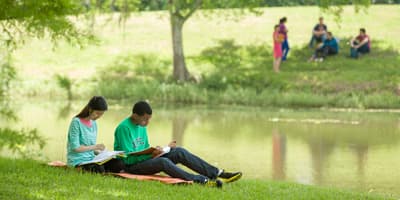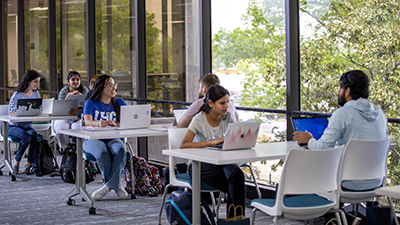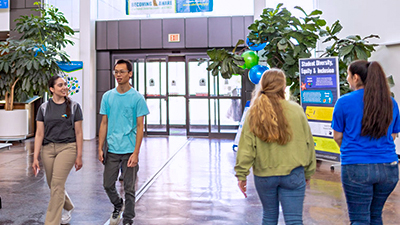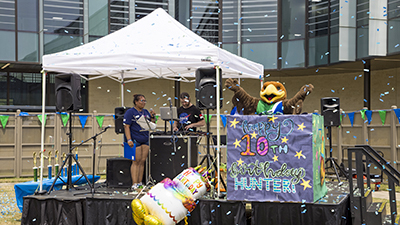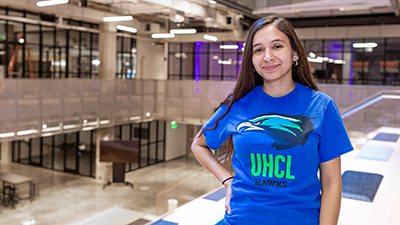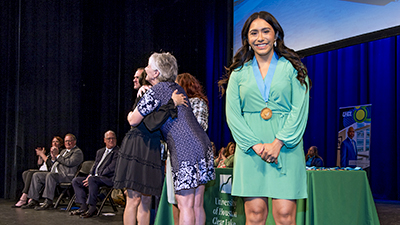UHCL to host summit with world renowned scientists to discuss preparing astronauts for extended-duration spaceflight


Someone who is alive today could step on the surface of the planet Mars. While this idea is thrilling, the reduced gravity associated with spaceflight and the cognitive stress of lengthy confinement present significant challenges for human physiology.
The Spaceflight Human Optimization and Performance Summit-2023, to be held at University of Houston-Clear Lake April 27-29, will connect thought leaders in strength and conditioning, sport science, psychology, nutrition and other related disciplines in a forum to address the physical readiness of astronauts for extended-duration spaceflight.
“UH-Clear Lake has always been connected with NASA – we were in fact a university originally built for NASA,” said Associate Professor of Exercise Science and Executive Director for the Health and Human Performance Institute Bill Amonette. “It’s an honor as a university to host an event such as this, introduce our students and community to some fascinating science, and have the opportunity to be contribute to the discussion about strength and conditioning for astronauts in missions to the moon and Mars.”
Amonette said that college students may assume that the only way to have a career in space is by working in science or engineering at NASA or for one of its contractors.
“This is no longer the case,” he said. “Now, with commercial space flight, there are many more opportunities in all scientific and engineering disciplines. We are a university with NASA in our back yard. Discussing these ideas bring more voices to the table, introduces the community to the logistics of a trip to the moon and Mars, and where we are in our general understanding of exercise and how it can prevent catastrophic decrements in performance.”
Corey Twine, astronaut strength and conditioning specialist and SHOP-23 co-director, added that many disciplines encompass optimal performance for spaceflight. “Behavioral psychology is a big part of extended-duration missions,” he said. “Team dynamics, personality, and skills will all play a role in the success of a mission. Astronauts need nutritionists, biologists, chemists, strength and conditioning coaches, athletic and physical trainers as well as mechanical and biomedical engineers who can create the devices and equipment that provides loading to the human and prevents significant loss of bone and muscle mass.”
The summit’s keynote speaker is retired astronaut Capt. Chris Cassidy, whose presentation entitled “Do One More Rep!” explores the habits of effective leaders and how they can motivate their teams to overcome obstacles. Cassidy, a retired Navy SEAL, accumulated 378 days in space and has 54 hours and 51 minutes of spacewalk time, placing him in an elite group of four U.S. crewmembers with 10 spacewalks. He is currently president and CEO of the National Medal of Honor Museum.
Featured speakers include Judith Hayes, Chief Science Officer for NASA, Suzanne Bell, lead of the Behavioral Health and Performance Laboratory at NASA and professor of psychology at DePaul University; Bianca Cerqueira, a human performance research scientist at Lackland AFB within KBR’s Human Performance Research Division; and Barry Spiering, lead sport scientist for New Balance, and former scientist at NASA and the US Army Research Institute of Environmental Medicine (USARIEM).
Topics of discussion include post-flight reconditioning; nutrition as fuel for astronaut performance; wearable technology and remote monitoring; confinement, performance and extended-duration spaceflight; and the future of human performance and spaceflight.
Twenty-two years after the first human beings began living in low Earth orbit on the International Space Station, NASA aims to return to the moon in the near future, but with very different goals, and many additional agencies and partners working together requiring astronauts to be equipped to endure much lengthier stays in space.
“Exercise is critically important to maintain the cardiovascular capacity, and muscle and bone density of astronauts on the moon or in transit missions to Mars,” Amonette said. “Within our lifetime, it’s possible that humans could establish a permanent base on the moon for extended missions. But we have to be prepared to deal with the maladaptations that will come with it—changes in astronauts’ sensorimotor function, coordination, metabolic capacity, and other issues that can impair functional capabilities.”
Twine said the more we learn about exercise and nutrition, the better we will be able to address these problems. “Until now, these were used to maintain function and avoid critical loss so the individual could recover and rehabilitate on Earth," he said. "With extended-duration missions, maintaining strength, coordination, power and metabolic capacity will be essential to continue living and working on an extraterrestrial surface."
The SHOP Summit-23 is an inaugural event made possible through a partnership between KBR and UHCL. Continuing Education Units through the National Strength and Conditioning, Texas Physical Therapy Association and the Board of Certification for the Athletic Trainers are available for conference attendees.
The cost of registration includes breakfast and lunch for both days of the summit. To register, go online.
